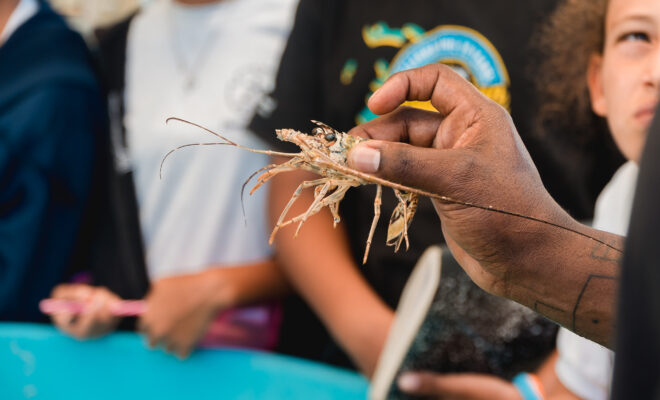Mia Avril, Aquaculture Technician, Cape Eleuthera Institute at The Island School
What is Aquaculture?
Aquaculture is defined as the cultivation of aquatic plants and animals. Aquaculture is practiced for various reasons, such as the restoration of wild fish stocks to rebuild the population of threatened species, but it is primarily practiced for food production. Currently, aquaculture is the fastest-growing food production sector in the world. For almost ten years, aquaculture has consistently supplied upward of 50% of seafood consumed globally. Aquaculture is used for both freshwater and saltwater organisms, and the most common species farmed globally include catfish, tilapia, salmon, prawns, shrimp, and seaweed.
Despite global trends, aquaculture in the Caribbean region has not shown as much growth. In fact, there has been a decline in aquaculture production in the Caribbean over the last thirty years due to a multitude of reasons such as access to inputs and cost. However, there are still efforts to promote aquaculture and grow the sector.
Mariculture in the Caribbean
Mariculture refers to the cultivation of saltwater species. Several islands in the Caribbean, such as St. Lucia, Dominica and Jamaica have a well-developed ‘seamoss’ farming industry that supplies markets in the UK and other islands in the region. Seamoss or Irish moss are varieties of red algae from the Graciliaria and Eucheuma families that have many nutritional and medicinal properties and are a popular food source. These species can also be used in the pharmaceutical and cosmetic industries. Farming is typically done in nearshore areas on ropes and has lower associated costs than other forms of aquaculture, hence its popularity.
Figure 1. Seamoss farm in South Saint Lucia Source: FAO 2019
Other forms of mariculture can be found in places like The Bahamas and Belize, often with inland, indoor farms using water pumped from the ocean or deep wells to grow marine species such as lobsters, conch, and a variety of finfish including snappers, groupers, and flounder.
Mariculture is currently practiced in Eleuthera at The Island School, through an ongoing project looking at raising juvenile spiny lobsters to maturity and returning them to the wild to help boost populations and to support the lobster fishery.
Freshwater Farming in the Caribbean
Tilapia (Oreochromis sp.) and freshwater prawns (Macrobrachium rosenbergii) are the most farmed freshwater species in the region, and this is typically done at the subsistence (backyard) level; however, there are commercial operations. Where soils permit, freshwater aquaculture is practiced in earthen ponds, supplied by surface water sources such as rivers. Alternatively, aquaculture can be done in tanks, as practiced at The Island School.
Figure 2. Unlined earthen tilapia pond in the Kalinago Territory, Dominica ©FAO/ Mia C. Avril 2020
Figure 3. Berried female Macrobrachium rosenbergii at a green-water pond in north Dominica ©FAO/ Mia C. Avril
Prospects for Aquaculture
Beyond farming just to supply consumers, aquaculturists can be creative with how they present their products. For example, in Jamaica, there is a farmer who has a twenty-acre freshwater farm growing a variety of fish species including tilapia and koi. This farm is operated as an ecotourism attraction where anglers are encouraged to catch fish from the pond and have it prepared on-site. Not only is this a profitable business for the farmer, but it helps to reduce the pressure on marine fish stock while providing an entertainment factor.
It has been recognized that due to the constraints associated with aquaculture farming such as experience throughout the region, limited access to inputs and high costs associated with acquiring, limited policy and infrastructure (physical, fiscal and intellectual), growth of the sector would be greatly aided if there was better collaboration and networks among the aquaculture community as a region, rather than as individual countries. To that end, strides have been made to establish networks within the region. One such network is the Caribbean Aquaculture Education and Innovation Hub (CAEIH), which seeks to boost Caribbean aquaculture through enhanced education and research initiatives. More can be found out about this network by visiting the website. The United Nations FAO has also sought to create a network of aquaculture farmers, suppliers, and policymakers from across the region. Such initiatives serve to encourage current and prospective farmers through the provision of support so that more countries and regions can adopt forms of aquaculture for a more sustainable future.
